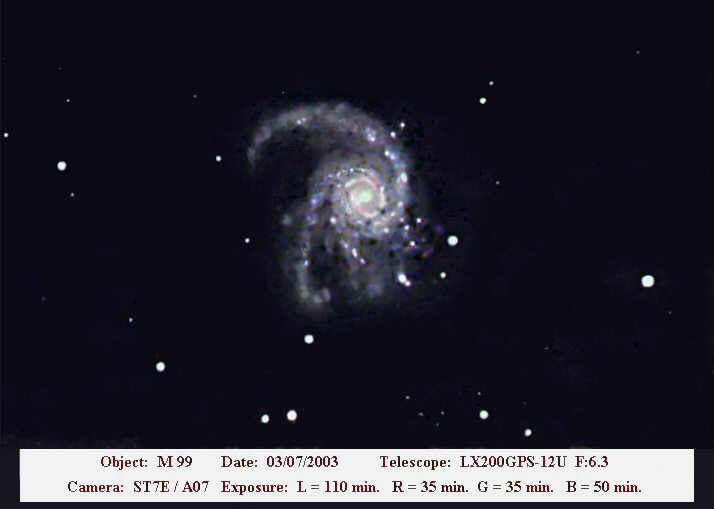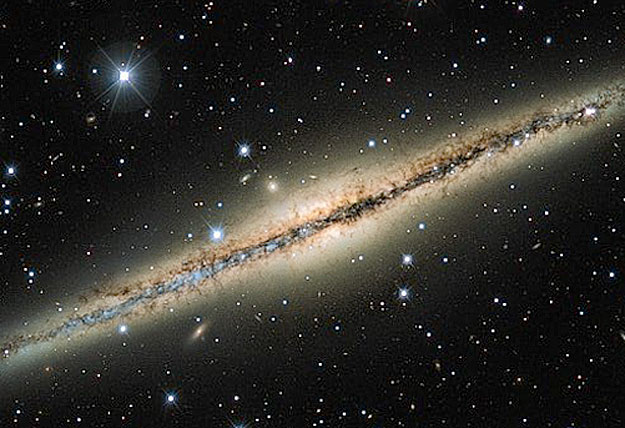This is another of those occasions when the Hubble Telescope gets to strut its stuff. This picture reveals very fascinating and intricate structures in the Sombrero's dust lane.
But personally I wish that M104 had been imaged in Ha light as well. Ha light is very sensitive to the presence of massive stars. As pointed out in a paper by Janice C. Lee, Armando Gil de Paz, Robert C. Kennicutt, Jr., Matthew Bothwell, Julianne Dalcanton, José G. Funes, S.J., Benjamin Johnson, Shoko Sakai, Evan Skillman, Christy Tremonti and Liese van Zee, it takes stars as massive as 17 solar masses or more to ionize hydrogen gas to the amount that it emits appreciable Ha light. As it is, this Hubble image of M104 is taken through filters that are basically RGB, or F435W(B), F555W(V) and F625W(r). I you follow this link,
http://heritage.stsci.edu/2003/28/original.html, you will see the original images of M104 taken through the three filters. There are very small differences between the three "filter images", except that the dust lane looks by far the blackest in the blue light image. An Ha image would have given us very good information about whether or not there is any high-mass star formation in M104, but an RGB image isn't necessarily able to tell us much about that.
M104 does emit a small, apparently a quite small, amount of far ultraviolet light. You can see M104 in the seventh row from the top as the third galaxy from the right in this GALEX poster of galaxies:
http://www.galex.caltech.edu/media/glx2 ... img01.html. (Warning: the small page doesn't show you very much, and the large page is massive.) In this galaxy poster, blue represents far ultraviolet light from really hot and massive stars, and yellow represents near ultraviolet light from star that are not necessarily very massive. The picture of M104 reveals only traces of blue light, which means there aren't many hot massive star in this galaxy at all.
For comparison you may look at this GALEX image of NGC 4565:
NGC 4565 often comes through as a quite red galaxy, and personally I have never seen a photo of this galaxy that has revealed the presence of an emission nebula in it. But in the GALEX image of NGC 4565, there is quite a lot of far ultraviolet light, mapped as blue, from massive stars. Here, however, is an image of NGC 4565 where it looks quite yellowish:
NGC 4565 as seen by the ESO VLT FORS (visual and near-UV FOcal Reducer and low dispersion Spectrograph)
It seems clear, in any case, that M104 is poor in star formation and in hot bright stars, more so than NGC 4565.
Ann
 The Sombrero Galaxy from Hubble
The Sombrero Galaxy from Hubble









